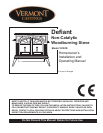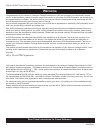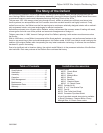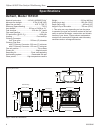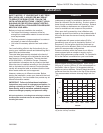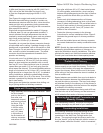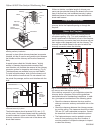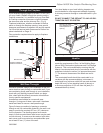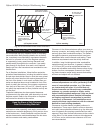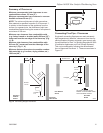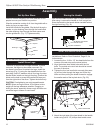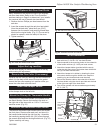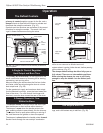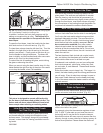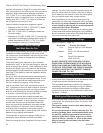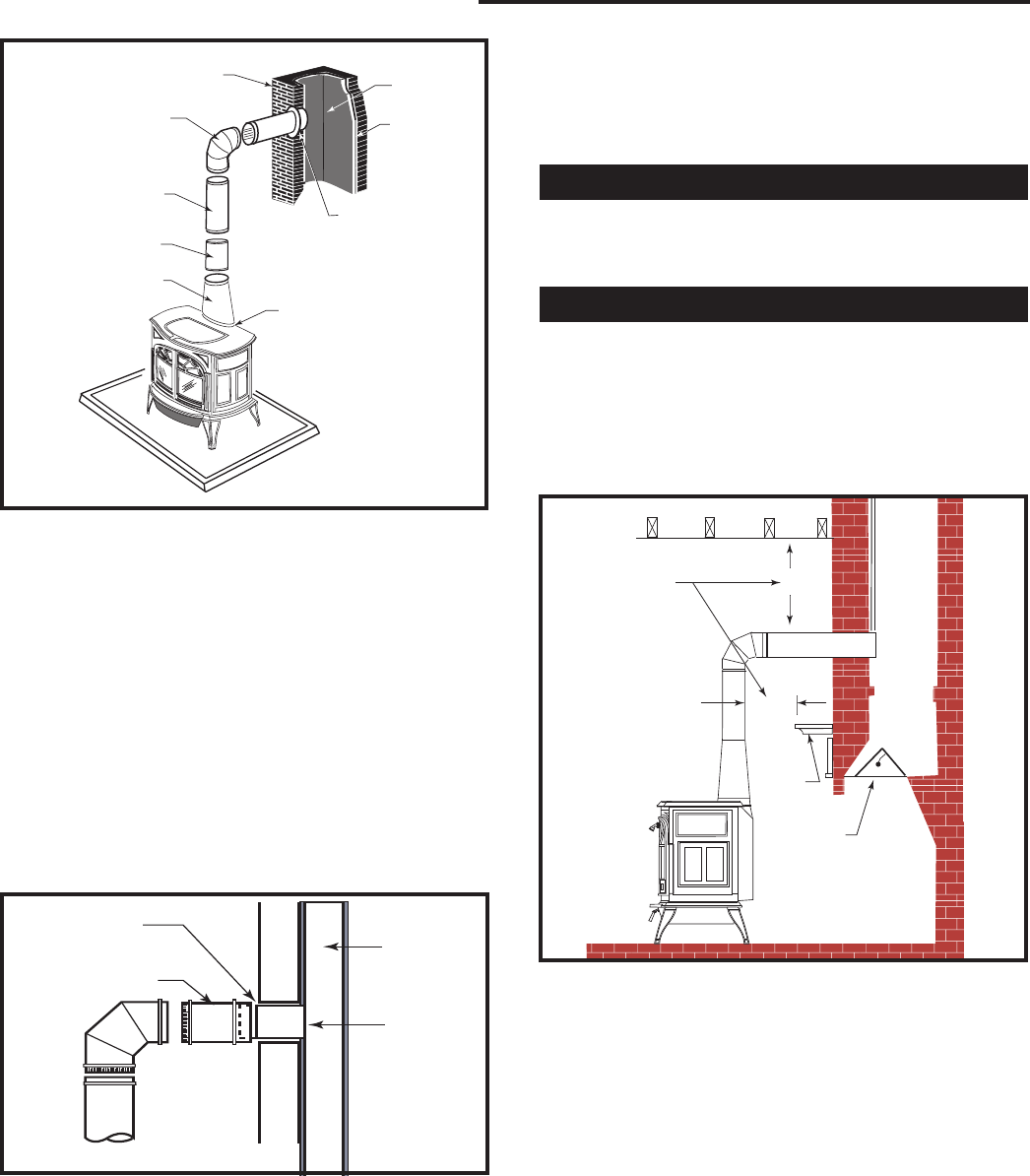
8
Defiant 1610CE Non-Catalytic Woodburning Stove
30003846
securely in place. Most chimney breeches incorporate
thimbles, but the fit must be snug and the joint between
the thimble and the chimney wall must be cemented
firmly.
A special piece called the “thimble sleeve,” slightly
smaller in diameter than standard connectors and
most thimbles, will facilitate the removal of the chimney
connector system for inspection and cleaning. (Fig. 6)
Thimble sleeves are available from your local dealer.
To install a thimble sleeve, slide it into the breech until
it is flush with the inner flue wall. Do not extend it into
the actual flue passage, as this could interfere with the
draft.
ST244
Plymouth
fplc over mantel
12/99
DEFIANT
*
*
Check These
Clearances
Mantel
ST244a
Fig. 7 In this installation, the chimney connector attaches to
the chimney above the fireplace opening.
Seal
This Off
ST243
thinble connection
12/13/99 djt
Thimble Sleeve
Chimney Connector
Flue
Keep
sleeve
end flush
with flue
tile
ST243
Fig. 6 The thimble, made of either ceramic or metal, must be
cemented securely in place.
ST492
Defiant
freestanding
installation
11/00
Chimney
Elbow
Slip Pipe
Standard
Connector
Oval to
Round Adapter
Flue Collar
Thimble
Flue In-
ner
Flue
ST492
Fig. 5 An exploded view of the chimney connection in a free-
standing masonry installation.
Without a thimble, a suitable length of chimney con-
nector can be extended through the breech to the inner
face of the flue liner, and cemented securely in place.
Additional pieces of connector are then attached with
sheet metal screws.
Fireplace Installations
The chimney connector may be connected to the
chimney above the fireplace opening or through the
fireplace.
Above the Fireplace
The Defiant may be connected to a chimney above
a fireplace opening. (Fig. 7) In such installations, the
stove is positioned on the hearth in front of the fireplace
and the chimney connector rises from the stove top and
then angles ninety degrees back into the chimney. The
chimney liner should extend to the point at which the
chimney connector enters the chimney.
The thimble sleeve should protrude 25-51 mm (1-2”)
into the room. Use furnace cement and thin gasketing
to seal the sleeve in place in the thimble. Secure the
chimney connector to the outer end of the sleeve with
sheet metal screws.
If the chimney connector in your installation enters the
chimney above a fireplace, follow all the guidelines
mentioned above for freestanding installations. In addi-
tion, give special consideration to the following points:
• Check the clearance between the stove and the
chimney connector, and any combustible trim or the
mantel.
• Check the clearance between the chimney connec-
tor and the ceiling. The clearance should be at least
762 mm (30”) with unshielded connectors. Consult
the clearance charts for other installation options.
• The fireplace damper must be sealed to prevent
room air from escaping up the flue. However, it
must be possible to re-open the damper to inspect
or clean the chimney.



